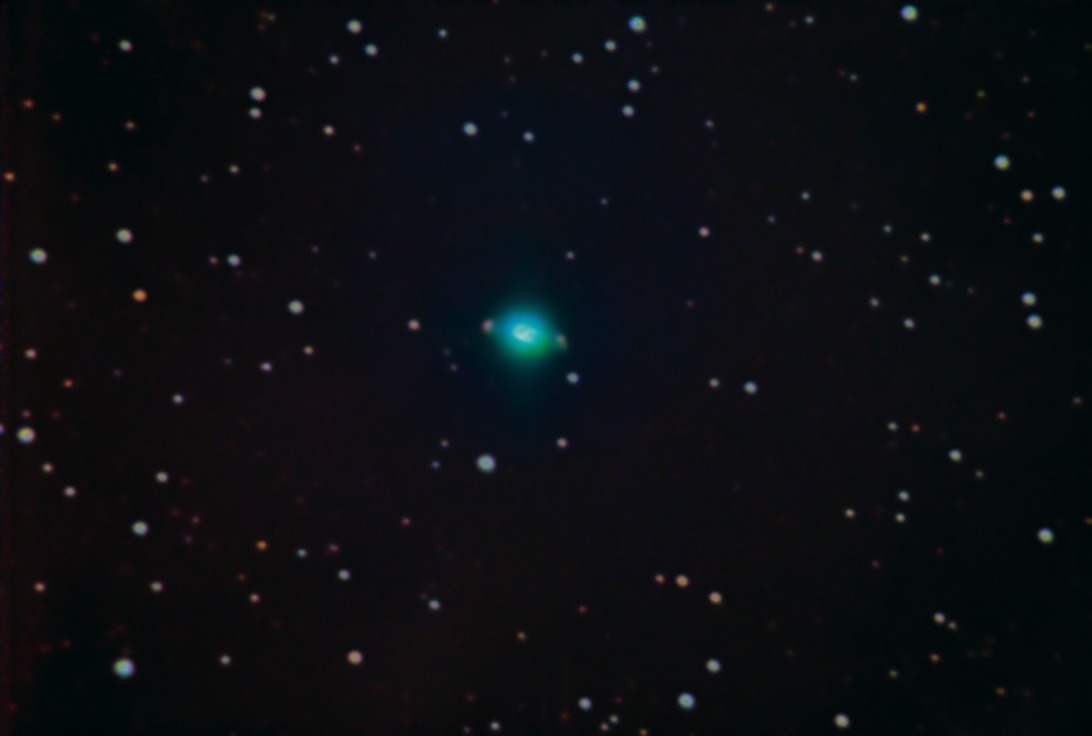NGC 7009
Saturn Nebula

NGC 7009
Saturn Nebula: The Saturn Nebula is a planetary nebula in the constellation Aquarius, estimated to be between 2,000 and 4,000 light-years away. Its name comes from the nebula's mild resemblance to the planet Saturn. (Imagine viewing the planet and its rings edge-on.) In actuality, the nebula's "rings" are jets of gas.
NGC: 7009
Right Ascension: 21h 04.2m
Declination: -11° 22'
Apparent Magnitude: 8.0
Date: November 2008
Equipment:
Telescope: Meade 16" Schmidt Cassegrain with f6.3 reducer
Camera: SBIG ST-10XE
Guiding: Meade 5" refractor/DSI Pro/PHD
Scale: 1.01
Links to images of this object on other sites:
http://apod.nasa.gov/apod/ap971230.html
http://www.noao.edu/outreach/aop/observers/n7009.html
Additional Comments: A planetary nebula occurs when a sun-like star is reaching the end of its life. Typically, the star will have a core made of carbon, surrounded by a shell of helium (in the process of fusing into carbon), and outer layers of mostly Hydrogen. The fusing Helium will shrink and heat the core, attempting to fuse the carbon into heavier elements, but the temperature and pressure will never be great enough in a star of this (relatively low) mass to fuse the carbon. As a result, this very hot carbon core and helium shell drive off the outer layers of hydrogen. As these outer layers are driven off by the intense heat of the core, they form what is called a planetary nebula, that is visible as a shell of glowing gas surrounding a very hot central star. (Note that the term "planetary" has nothing to do with planets - they are called planetary because in early telescopes they appeared to be tiny fuzzy disks that reminded observers of planets!) Because the details of this shedding process can vary significantly from star to star, all planetary nebulae are unique, and many show multiple shells, as different layers are shed over a period of time. Eventually, the shell will dissipate and the hot core, now called a white dwarf, will remain. A white dwarf can have as much mass as the Sun, but compressed into a sphere the size of the Earth.
Views: 6102
 This work is licensed under a Creative Commons Attribution-NonCommercial-ShareAlike 4.0 International License.
This work is licensed under a Creative Commons Attribution-NonCommercial-ShareAlike 4.0 International License.

